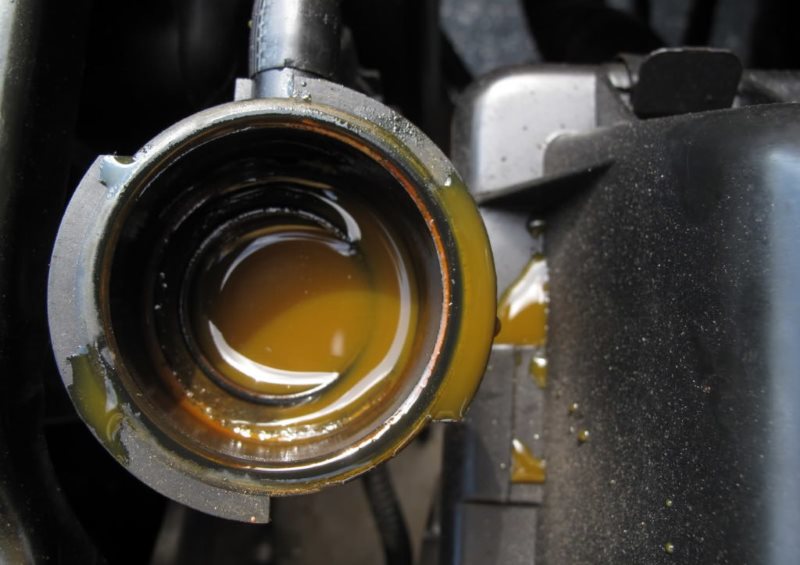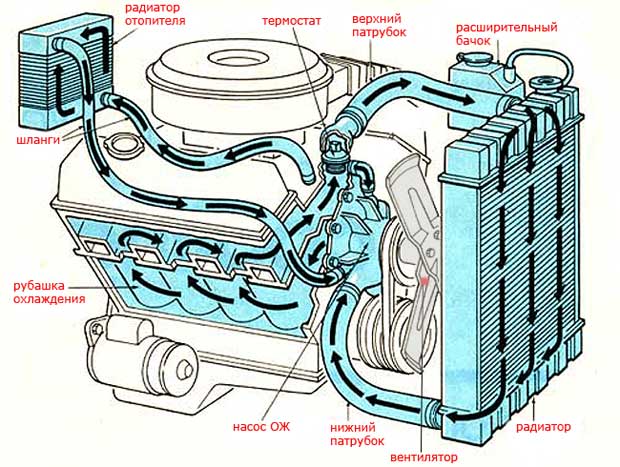
Antifreeze turned brown. What is the reason?
Main reasons
It should be noted that antifreeze, like oils, has a certain period of use. Often, replacement is required every 50000 km, but the indicator is average and depends on the quality of the fluid, the manufacturer.
There are several main factors why antifreeze has become rusty in color. The main ones are:
- The expiration date has expired. A brown tint indicates that the additives in the material can no longer perform the assigned functions, precipitation begins, which causes a color change.
- Overheating of the motor. The problem may lie in an untimely fluid change, and after the end of its service life, it quickly boils, the initial shade changes. In addition, overheating of the motor can be due to many other reasons, which also cause a rusty color.
- Oxidation of parts. There are metal structures in the cooling system that can rust and change the color of the antifreeze. The problem is typical for long-term operation of the liquid, which can no longer protect the metal surface. The natural oxidation process begins.
- Destruction of pipes. Without a planned replacement of the coolant, it leads to the unusability of rubber products, namely the pipes, they gradually collapse, and their parts fall into the liquid itself, but the color will often be black, not red.
- Water instead of antifreeze. During leaks, many use water as a temporary alternative. It is necessary to use such measures in extreme cases, and after water, it is important to thoroughly rinse the system, pour in antifreeze. If you do not follow the rule, then metal parts from water rust, in the future they change the color of the coolant.
- Oil contamination. If the gaskets break, oil from the engine can enter the cooling system, and the color changes during mixing. In this case, the antifreeze will not only be rusty, an emulsion will appear in the tank, which resembles condensed milk in color and consistency.
- The use of chemistry. Radiator leaks are common during driving, and in emergencies, leak removers, sealants and other chemicals may be used. They help for a short time, and the antifreeze itself quickly turns brown.


Understanding what the reason is, it is necessary to eliminate it and replace the fluid with a new one. Leaving the process to chance is fraught with consequences. The main danger is overheating of the motor, which causes serious and costly repairs.
In some cases, even after changing the antifreeze, it may turn red after a couple of weeks. The problem appears due to non-observance of the basic rules. Namely, after removing the main cause, the system must be flushed, otherwise, the antifreeze will quickly turn reddish, and its properties will be lost. The new liquid in the system begins to wash out the old plaque, gradually staining.


Methods for solving the problem
To solve the problem with rusty antifreeze, the car enthusiast needs to know the exact reason. If an emulsion or parts of oil from the engine appears under the cover of the expansion tank, then it is necessary to look for the malfunction as quickly as possible. It is recommended to pay attention to:
- Cylinder head gasket.
- Heat exchanger.
- Branch pipes and other types of gaskets.
As a rule, in the first two places there is often contact between oil and coolant. After combining the liquids, clogging of the cooling system begins, and malfunctions of the motor appear. After removing the cause, they flush the systems and replace the coolant.
It is much easier to solve the problem if the antifreeze has expired. It will be enough to replace the liquid, but first rinse everything with special means or distilled water. Flushing is carried out until the water is clear, without a reddish tint.


Watch this video on YouTube